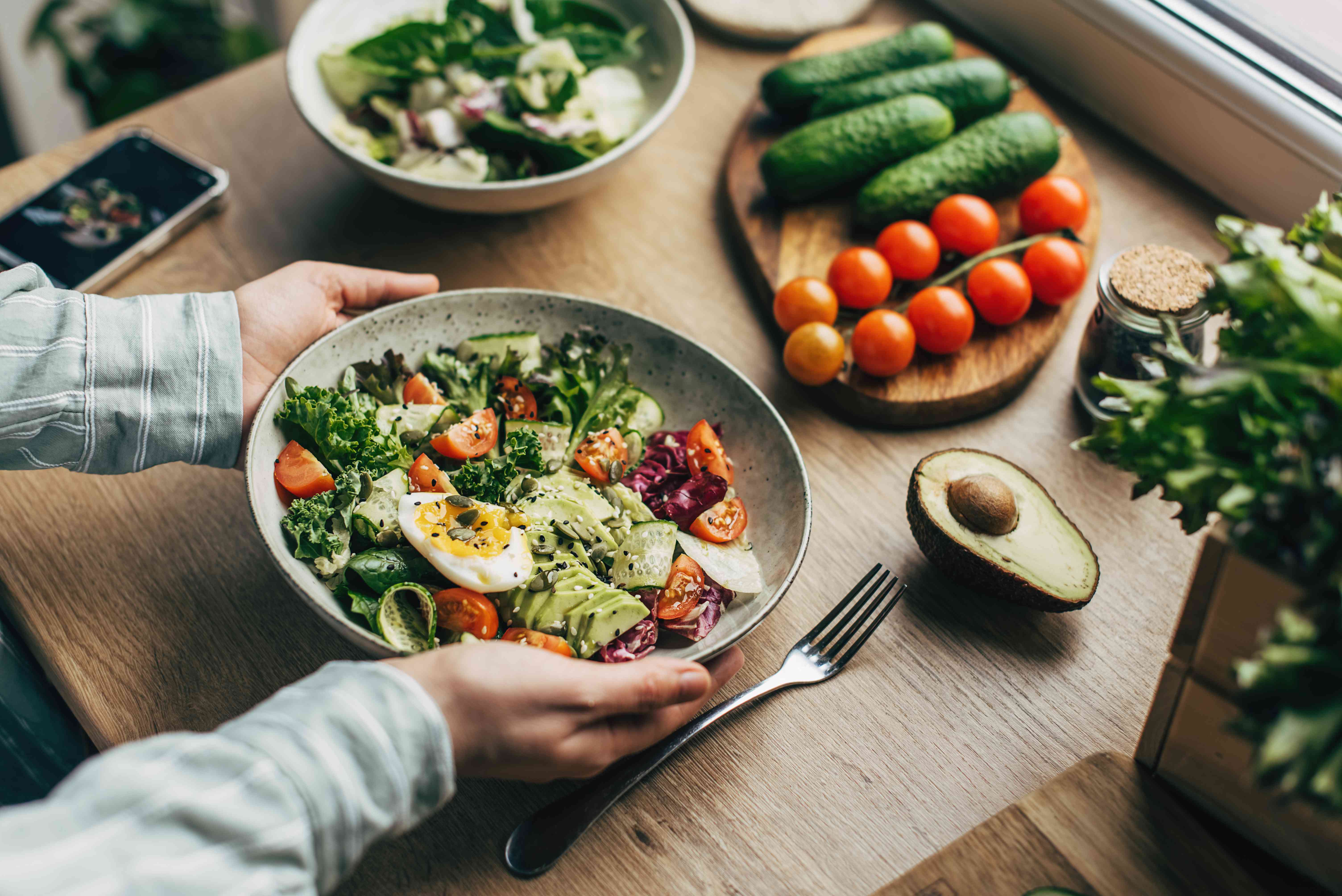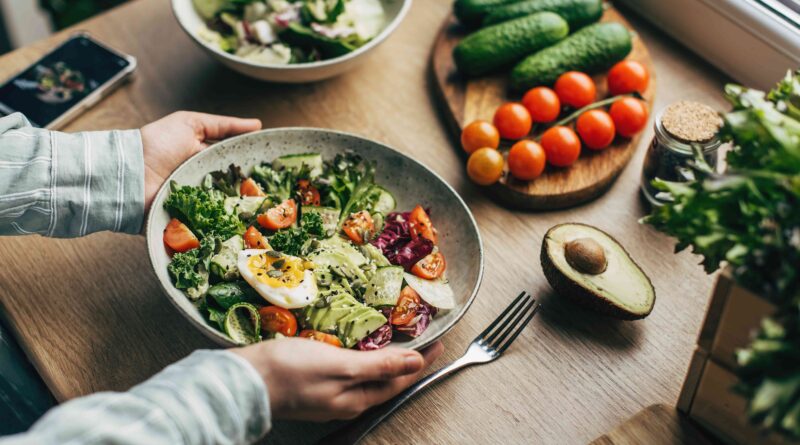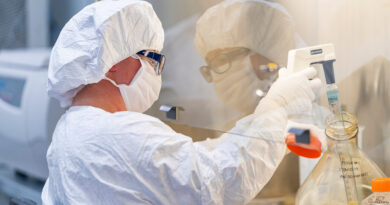How & Why Nutrition Is Important

GLP-1s, or glucagon-like peptide-1 receptor agonists, are medications that help regulate blood sugar levels by increasing insulin release and slowing digestion. They are primarily used to treat type 2 diabetes, helping to control blood sugar spikes after meals.
While these drugs were initially intended for treating diabetes, a few GLP-1s have received FDA approval for weight loss. These medications assist people with obesity with weight management by curbing appetite and promoting a sense of fullness. That’s why what you eat while taking these medications matters.
Nutrition plays a crucial role in regulating the effectiveness of GLP-1s. These medications work by mimicking the action of our body’s natural hormone GLP-1, which:
The types of foods and nutrients that you consume also affect how effectively GLP-1s work in your body. Consider the following:
- Carbohydrates: Some carbohydrates, like glucose, galactose, and sucrose, can help your body release more GLP-1—which may make GLP-1 medications work better. The body’s sensors for glucose, such as SGLT1 and GLUT2, help in this process. Certain starches that become short-chain fatty acids (SCFAs) can also increase GLP-1 levels.
- Proteins: Certain proteins and amino acids, such as glutamine, arginine, and phenylalanine, can boost GLP-1 release. These nutrients interact with specific receptors in the gut to help release GLP-1. Eating high-quality protein sources can support the action of GLP-1 medications.
- Fats: Healthy fats, like monounsaturated fats and omega-3 fatty acids (such as DHA), can help release more GLP-1. Receptors in the body that sense these fats, like GPR40 and GPR119, aid in this process. Including these healthy fats in your diet can improve how well GLP-1 medications control blood sugar levels.
Considerations
While a nutritious diet can enhance the effectiveness of GLP-1s, there are also risks and considerations. The following factors can affect GLP-1 release and how your body responds to the medication:
- Eating high-fat or sugary foods can lead to weight gain and insulin resistance.
- Consuming artificial sweeteners (unlike natural sugars) does not stimulate the release of GLP-1.
- Drinking alcohol alongside high-fat meals can suppress GLP-1 effects.
- Slowly chewing your food and timing your meals by eating protein before carbohydrates can increase GLP-1 levels.
Eating a nutritious diet while taking GLP-1s is essential for maximizing the benefits of these medications. GLP-1s stimulate insulin release, reduce blood sugar levels, and promote satiety. A balanced diet can enhance these effects, leading to better overall health outcomes.
Not eating healthy while taking GLP-1s can pose several risks, including:
- Hypoglycemia: GLP-1s help lower blood sugar levels, but eating unbalanced meals or skipping meals can lead to hypoglycemia (low blood sugar). This is especially true if you take GLP-1s without eating enough carbohydrates.
- Nutritional deficiencies: A diet that lacks essential nutrients (such as calcium, iron, and other vitamins) leads to nutritional deficiencies. GLP-1s can affect digestion and absorption, so insufficient nutrients can cause vitamin deficiencies.
- Cardiovascular risk: Some GLP-1s have cardiovascular (heart health) benefits. However, a diet high in saturated fats and sodium can increase cardiovascular risk factors such as high cholesterol and hypertension (high blood pressure), potentially undermining these benefits.
Monitoring blood sugar levels closely, adhering to prescribed meal plans, and consulting with healthcare providers or dietitians can help manage these potential risks effectively.
Certain foods can boost GLP-1 and aid GLP-1 medications to help regulate blood sugar levels and keep your metabolism healthy. Consider adding the following foods and drinks to add to your diet if you’re taking weight loss medications:
- Whey protein: Milk, yogurt, cottage cheese
- Soy protein: Tofu, edamame, soynuts
- Lean protein: Chicken, eggs, beans
- Fish protein hydrolysate: Salmon, tuna, cod
- Capsaicin: Cayenne peppers, jalapeños, chili peppers
- Whole grains: Oats, sorghum biscuits, quinoa
- Low-glycemic-index beverages: Water, coffee without sweeteners, green tea
- Oils and preservatives: Extra virgin olive oil, avocado oil, vinegar
- Insoluble fiber: Nuts, peas, cauliflower
- Leafy vegetables: Kale, spinach, collard greens
- Low-sugar fruits: Berries, apples, oranges
- Probiotics: Kefir, kimchi, and Greek yogurt
These foods and drinks help your body make more GLP-1 and stabilize your blood sugar levels. Including these foods in your meals can work alongside medications to improve how your body handles sugar.
The above list is not comprehensive. Working with your healthcare provider or nutritionist can help you get a personalized eating plan while taking GLP-1s.
Plenty of foods bolster the effects of GLP-1s. However, you should avoid some foods and beverages, as they can minimize the effects of your weight loss medications and increase your risk of side effects. For example:
- Alcohol: Drinking too much alcohol, especially with high-fat meals, can interfere with GLP-1 secretion and cause fluctuations in blood sugar levels.
- Added sugars: Sugary drinks like soda, sweetened juices, and energy drinks can lead to rapid blood sugar spikes and may counteract the benefits of GLP-1s in controlling blood glucose levels.
- White bread: One study found that bread crafted from sourdough diminished the GLP-1 response in people prone to glucose intolerance, but multigrain bread did not.
GLP-1 medications help regulate blood sugar levels and can help with weight management. As such, eating nutritiously is an important part of your treatment plan.
Incorporating food categories like whey protein, whole grains, and leafy vegetables into your diet can enhance the effects of GLP-1s and improve your health in the long run. Conversely, avoiding or limiting sugary foods and alcohol can reduce the risk of side effects and increase the effectiveness of your medication.





